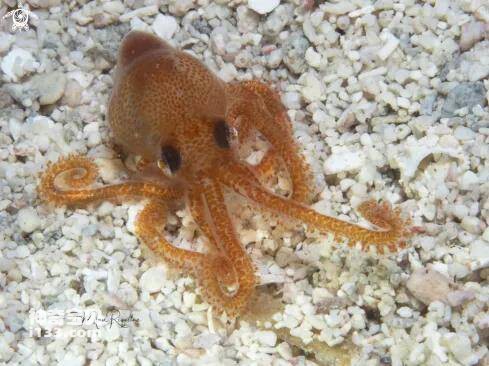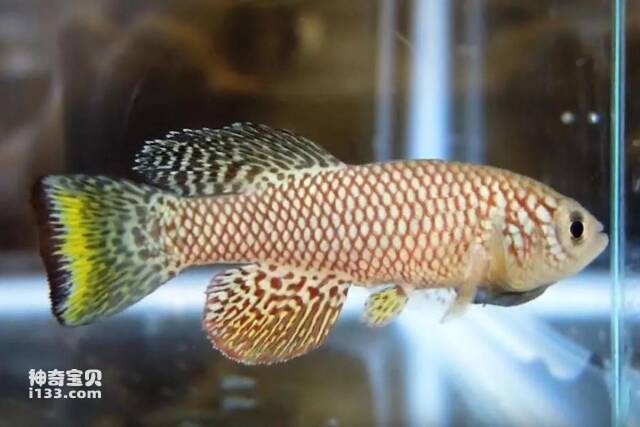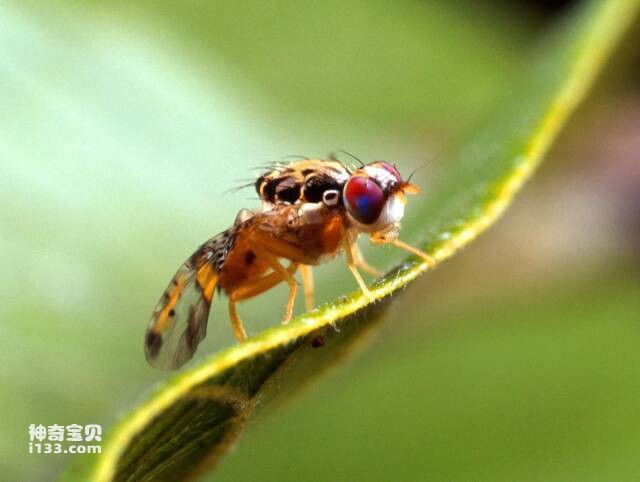There is an animal whose existence is very short. You will definitely ask what is the meaning of their life? In fact, their only purpose of living is to reproduce. Although their lifespan is short, their existence can be traced back to 200 million years ago, which fully proves their adaptability. Next, you might as well guess which animal has such a short life and see if you can guess it?

15. Labold's Chameleon
Size: 3 cm
Location: Madagascar
Lifespan: 4 months-1 year
A member of the lizard family, the Labrador's chameleon holds the record as the shortest living four-legged animal. They spend most of their lives as developing embryos, only becoming fully grown during four to five months during Madagascar's rainy season. Females live longest but are rarely seen in their second mating season.
It is the shortest-lived of the four-legged animals, and although they spend about eight months in their eggs, these lizards only live four to five months after hatching. They usually hatch in November and reach sexual maturity in January.

14. Atlantic dwarf octopus
Size: 9 cm
Location: Atlantic Ocean
Life span: 8-10 months
Also known as the Caribbean pygmy octopus or small egg octopus, this species is so small that it can hide in clam shells, cans, or any small opening to protect itself from underwater predators.
It has the same ink sac and special chromatophores as a regular octopus, which allows it to change color and blend into its environment. The young are fully formed at birth and ready to hunt within hours of birth. However, their lifespan is much shorter than that of the common octopus, which only has a lifespan of three to five years.

13. Dragonfly
Size: 2.5-10 cm
Location: Originally from Europe
Lifespan: 4-6 months
Among the world's oldest insects, dragonflies were once much larger, with wingspans of up to 30 inches, making them the most famous flying insects of prehistory. Dragonflies spend most of their lives as larvae or nymphs beneath the surface of ponds and streams.
Larvae can remain in the water for months or even years. However, once it emerges from the water and metamorphoses into an adult dragonfly, it only survives for about four months.

12. Worker Bee
Size: 1.2 cm
Origin: Native to Africa and Europe
Lifespan: 5 weeks-8 months
The job of worker bees is to process nectar, brew honey and feed bee larvae. Bees that are active in the summer live shorter than bees that are active in the winter. Their short lives are spent caring for the queen and hive.
The lifespan of female worker bees depends on their workload. During the busy summer months, they only live 5-6 weeks, with male worker bees dying minutes or hours after mating, and with limited resources, unsuccessful females are the first to be killed or driven out of the hive. . The average lifespan of a bee is about eight weeks.

11. Dwarf Goby
Size: 0.9-1.5 cm
Location: Australia
Lifespan: 59 days
The dwarf goby is one of the shortest-lived fish known. It spends half of its life cycle in the larval stage before reaching adulthood. Their short lifespan is due to the large number of predators, with a daily mortality rate of 8%.
These fish survive through rapid reproductive cycles, with females laying up to 400 eggs at a time. It inhabits coral reef habitats at depths of 3 to 20 meters. This species has the shortest lifespan among vertebrates, living only a maximum of 59 days. Approximately three weeks as larvae, two weeks to settle on the reef, and three weeks as adults.

10. House fly
Size: 0.5-1 cm
Location: All over the world except Antarctica
Lifespan: 25 days-2 months
The entire life cycle of a fly is very short, only one to two months in total, even in warm temperatures and optimal living conditions. Generally speaking, flies living in a home with plenty of food can survive up to 60 days.
The eggs hatch in less than 24 hours, and the larval stage lasts from 5 to 14 days, followed by the pupal stage, which lasts another 3 to 10 days. Female house flies can lay up to 500 eggs at a time, and can produce as many as 10 to 12 generations in one summer.

9. Turquoise Killifish
Size: 6 cm
Location: Africa
Lifespan: 35 days
Since the rainy season in Africa is short, turquoise killifish must mature and spawn before the water dries up. They reach sexual maturity after 14 days and usually live for more than a month.
This annual killifish inhabits ephemeral ponds in semi-arid areas where precipitation is sparse and erratic, and has adapted to the daily dryness of its environment by evolving desiccation-resistant eggs that can lie dormant in dry mud for a year or more. Enter diapause for a long time.

8. Pink moth
Size: 1.5 cm
Location: Anywhere except Antarctica
Lifespan: 28 days
Also known as waxworms, they are believed to have been first found in Indian cornmeal, hence the name. They are invasive pests that can chew through plastic and infect sealed food containers, and most only live to be 28 days old.
Their entire life cycle from egg to larva, cocoon and adult may be as short as a month, depending on environment and temperature. These common pests, often mistaken for weevils, feed on foods such as rice, flour and other dry goods.

7. Drone ants
Size: 1.2 cm
Location: Anywhere except Antarctica
Lifespan: 3 weeks
Unlike ordinary ants, drone ants have wings and resemble wasps. Each is a male, and their purpose is to reproduce so that the population continues to grow. Their lifespan is very short - only three weeks, while the queen can live up to a year and lay 800 to 1,500 eggs per day.
Although an ant colony can exist for many years, not all individuals live long. Male drone ants and female worker ants tend to have much shorter lifespans than the queen. Male drone ants are one of the shortest-lived species because they die after mating, which can happen within a few days of their existence.

6. Fruit flies
Size: 3 mm
Location: Anywhere except Antarctica
Lifespan: 2 weeks
These small winged flies are attracted to overripe fruit, and although they are considered a pest, they play an important role in the ecosystem. They eat decaying matter that might otherwise turn into fungal or bacterial infections and attract rodents.
Fruit flies are most noticeable from spring to fall. They reproduce very quickly, laying up to 500 eggs during their short lifespan. Fruit flies may look very annoying, but these little insects don't live long. Typically, even with a proper food supply, adults live about 2 weeks.

5. American Copper Butterfly
Size: 1-3 cm
Location: North America
Lifespan: 2 weeks
Compared with other butterflies, the American copper butterfly has the shortest life span. Although they are usually solitary animals, they can be found in groups when mating or eating plant food, which they generously share with other butterflies.
The American Bronze Butterfly has beautiful, bright orange wings and is an agile flier due to its wingspan. It is also the second fastest butterfly in the family Lycorisidae.

4. Mosquitoes
Size: 0.3-1 cm
Location: Originated in Africa but now spread across the globe
Lifespan: 1+ weeks
Mosquitoes are an ancient species that have been around since the Jurassic era when dinosaurs roamed the earth. Interestingly, only female mosquitoes produce the annoying buzzing sound we hear as they fly around. They are also the only animals that bite humans and animals. Thankfully, their lifespan is short.
The entire life cycle of a mosquito ranges from 4 days to a month, with the pupa developing into an adult mosquito in 2-3 days. Generally, male mosquitoes have shorter lifespans than female mosquitoes, with an average of only about 6 to 10 days as adults. In contrast, females can consume blood to replenish nutrients to lay eggs, and can live to 5 months or more if food supplies are sufficient.

3. Luna Moth
Size: Wingspan 7-17 cm
Location: Asia, North America
Lifespan: 1 week
Adult luna moths have no mouths and rely on the fat stored in their larval stages to survive. Their only purpose is to reproduce and then die soon after. For this reason, reproduction is vital to keeping the species alive. Unfortunately, there are only two generations of Luna Moths per year in Pennsylvania, where they are most commonly found.
If necessary, males will fly long distances to mate, and females will die after laying eggs. These brightly colored moths can grow up to a 7-inch wingspan and are rarely seen due to their nocturnal habits.

2. Abdominal hairy animals
Size: 1-2mm
Location: Global
Lifespan: 3 days
A gastrotrichon is a microscopic worm-like animal found in freshwater areas around the world. These creatures, often called "hairy bellies" or "hairy backs," develop rapidly during the egg stage and hatch into microscopic adults. Due to their short lifespan, a rapid reproductive cycle is key to the survival of their species.
Their average lifespan is very short, with most people living only about three days. However, some can live up to 21 days. They have transparent bodies and male and female organs used for reproduction.

1. Mayfly
Size: 0.3-2.5 cm
Location: Various types of fresh water
Lifespan: 5 minutes-24 hours
These tiny insects begin life in the water where they lay their eggs and hatch shortly after. Some mayfly nymphs remain in the water for months or even years. But once they emerge and metamorphose into adults, their lifespan is less than 24 hours. Mayflies go through four stages in their life: eggs, larvae, sub-adults and adults. It is said that their lifespan is short only for adults.
Of all mayfly species, the American burrowing sand mayfly is one of the rarest and shortest-lived. Their adult lifespan is between 5 minutes and 2 hours, and they live solely for breeding purposes.
animal tags: Chameleon octopus dragonfly killifish mosquito mayfly
We created this article in conjunction with AI technology, then made sure it was fact-checked and edited by a Animals Top editor.